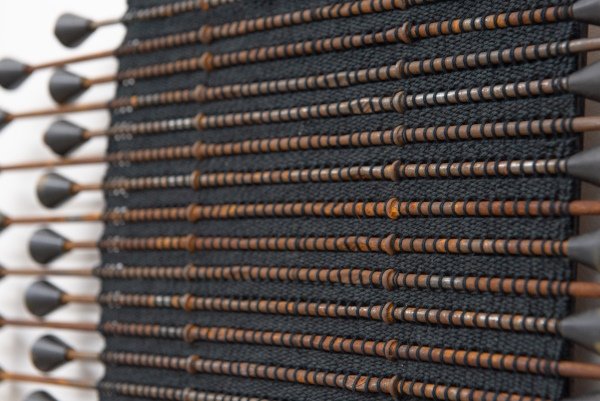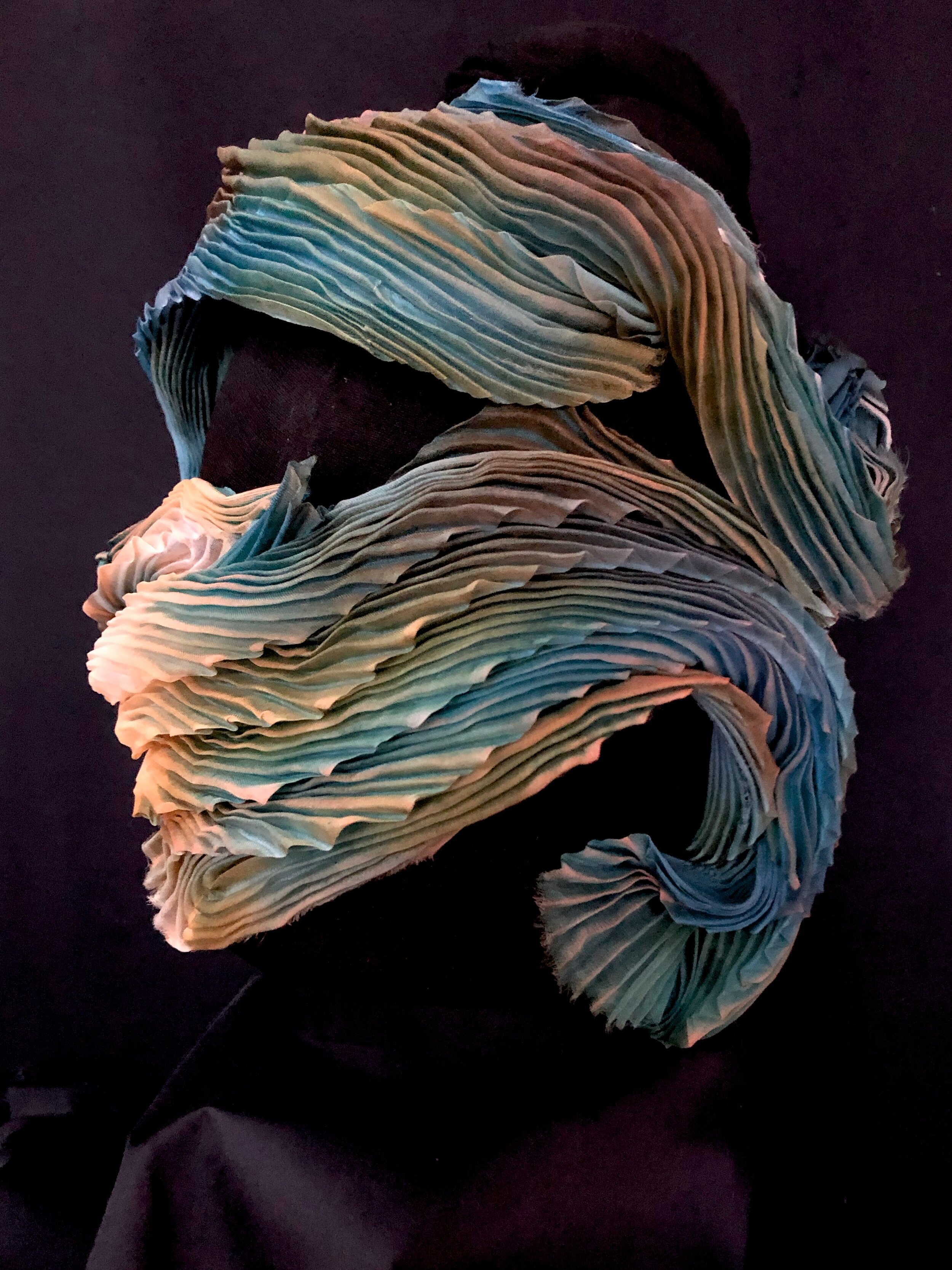Yes, we just opened a brand new exhibit in November at Citrus College (go see it if you haven’t), but we are also continuing to work on new pieces. Here are some of California Fibers’ artists with what’s currently in progress.
Debby Weiss has started working on small quilts in order to donate to families that lost everything in the Los Angeles fires. She started recently but hopefully can get herself on a roll to be able to at least get a few out there.
Elise Vazelakis is currently working on a series that rethinks what we throw away. She transforms Amazon packaging into plastic yarn and twines it into sculptural baskets, combining traditional techniques with modern materials. These pieces highlight the environmental impact of disposable culture and the possibilities for transformation and sustainability.
Gail Fraser has always loved twining; however, her work was always small. She is now playing with and creating larger works by adding shapes to each other. It is exciting to see what comes out of larger pieces of works and to play with these ideas.
Cameron Taylor-Brown has two different projects in the works: First the weaving: She is continuing to create pieces for herseries Threads of Time: Lyon Weavers’ Staircase. This series is inspired by a former jacquard weaving live/work space in an old neighborhood of Lyon, France that was a center of silk weaving in times past. Here is a link to pieces completed thus far: https://www.camerontaylor-brown.com/portfolio/new-collection
And more background info here: https://www.camerontaylor-brown.com/journal/weavers-staircase-lyon-france
Taylor-Brown’s second project is a conference: Hosted by UCLA's Department of Design Media Arts, Thinking Through Textiles: Future Pedagogies will explore the intersections of aesthetics, textile technique, cross-disciplinary studies, and new material insights, while introducing opportunities for collaborative engagement. This half day conference will be held at UCLA on Friday, February 21. Taylor-Brown is one of the conference organizers and will be moderating a panel discussion. Details are available here: https://materialencounters.art/thinking-through-textiles-symposium
Peggy Wiedemann is working on a wall piece called Think Outside the Box. It includes multiple materials like paper rush, rag cordage from India, Irish waxed linen, metals, bamboo, Pakistani grass, and found objects. She is using the basketry techniques of coiling, knotless netting, and weaving.
Carrie Burckle is currently twining a life-size abstract figurative form using a paper cord commonly found in Danish seating. Here is her work in progress.
Kathy Nida is working on her next big piece…hopefully to be fully ironed together in the next few days.
Stay tuned for more artist updates.



























































